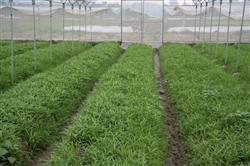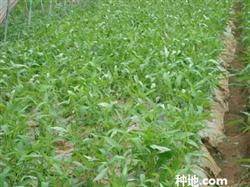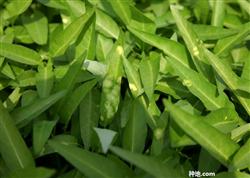Growing asparagus in plastic greenhouse

Growing asparagus in a plastic greenhouse? When will it be ready? Asparagus is widely cultivated in all parts of our province. It is the main green leaf light vegetable in summer and autumn. It likes high temperature and humid environment, has strong heat tolerance and is not resistant to frost. Its stems and leaves die in case of frost. The suitable temperature for growth is 25 ℃ 30 ℃, and the growth is stagnant. Therefore, plastic greenhouse should be used for out-of-season cultivation in winter. The varieties suitable for planting in our province are big chicken yellow, big bone green, sword leaf, silk silk, big chicken green and so on. During the sowing period, greenhouse cultivation can basically be produced and supplied every year. In order to obtain higher economic benefits, sowing should be arranged from October to December and listed from December to March of the following year. It is suitable to apply sufficient basic fertilizer. Generally, 1500mur2000 kg of mature organic fertilizer and 100kg of plant ash are applied per mu, which is fully mixed with the soil to form a border (bag ditch) with a height of 20 cm and a width of 130 cm. The seed coat of seed soaking to accelerate germination is thick and hard, and if sowed directly, it will germinate slowly because of low temperature, and in case of long-term low temperature, overcast and rainy weather, it will cause seed rot, so it is appropriate to accelerate germination. Soak the seeds in warm water of about 30 ℃ for 20 hours, then wrap them with sand cloth and put them in a 30 ℃ germination box to accelerate germination. When the seeds are exposed to 60% white, they can be sown. Sowing hollow cabbage can be sowed or striped, the amount of seeds used per mu is 1.5-2.0 kg, and after sowing, it is covered with fine soil about 1 cm thick. Strip sowing can draw a shallow trench with a depth of 3 cm, with a distance of 15 cm, and then spread the seeds evenly in the ditch, then cover the border with fine soil, and then cover the border with sunshade net, and then sprinkle water, and the sunshade net can be opened after emergence. Management in greenhouse 1. Management of temperature and humidity in greenhouse cultivation of asparagus in winter, the temperature is low, the humidity is high, and the continuous low temperature, overcast and rainy weather lasts for a long time, which is extremely disadvantageous to the growth of temperature-loving asparagus, so heat preservation and cold prevention is the key to out-of-season cultivation. After sowing, the greenhouse should be sealed in time to ensure that the temperature in the greenhouse is higher than 10 ℃, otherwise it will cause freezing damage. At the same time, when the sun is sufficient and the temperature is high, ventilation and moisture drainage should be strengthened to avoid the temperature in the greenhouse above 35 ℃ as far as possible to prevent plant diseases so as to maintain the exuberant growth of plants and increase yield. The relative temperature of the air in the greenhouse may reach 100% in high humidity and rainy days, so the thin films at both ends or around the greenhouse must be opened in time for ventilation. 2. Water and fertilizer management asparagus is a crop harvested many times, so in addition to applying sufficient basic fertilizer, it is necessary to carry out many stages of topdressing in order to achieve high yield. at seedling stage, it can be applied with 10% rarefied manure and 15% rarefied manure and urine, and the dosage per mu is 1000 May. when the seedlings have 4 true leaves, they should be mixed with 1520 kg compound fertilizer and 4 kg urea. 8kg (per mu) of compound fertilizer was used for each harvest in the harvest period. Asparagus needs a lot of water and should be watered frequently to keep the soil moist. The main diseases of pest control are seedling quenching and stem rot, which are caused by low temperature and high relative humidity. the occurrence of the disease can be reduced by reducing humidity, and it can be controlled by 700 times of Redushi or 800 times of carbendazim. The main insect pests are mites and red spiders, which can be sprayed 1000 times or 1500 times with propargite. Generally, it should be harvested in time when the plant of asparagus grows to 35 cm high after sowing for 45 days. Click to get more asparagus planting techniques click to get more vegetable planting techniques
- Prev

How can you prevent cabbage white rust?
How to cultivate asparagus? Please guide 1. Variety selection. The varieties suitable for planting are big chicken yellow, big bone green, sword leaf, silk silk, big chicken green and so on. Second, the cultivation season. Greenhouse cultivation can basically produce and supply year-round. Third, soil preparation and fertilization. The growth rate of asparagus.
- Next

How to prevent and cure the white rust of asparagus?
How to prevent and cure the white rust of asparagus? Please advise: 1. Practice rotation with other vegetable varieties for 2 to 3 years. Second, before sowing, seed sterilization is carried out according to the proportion of 100kg seeds 300g and 35% metalaxyl; third, at the initial stage of the disease, 6000 to 7000 times of 50% nail cream copper wettable powder is used, or 72.2% Purek water agent is used.
Related
- Where is it suitable to grow horseradish in China? it is expected to see the middle altitude horseradish in Alishan.
- How to prevent tomato virus disease reasonably? (Control methods included)
- Many people like to plant towel gourd on the balcony. What are the main points of this method and management?
- What crops can chili peppers be mixed with?
- Fertilization techniques and matters needing attention in Tomato
- What are the grafting techniques for peach seedlings in spring?
- Harm and control methods of root swelling disease of Chinese cabbage
- What are the pests of sweet potatoes? How to prevent and cure it?
- Symptoms, causes and Control methods of navel Rot in Tomato
- The cause of "Cucumber rotten bibcock" in Farmers' planting Cucumber and its Control Plan

